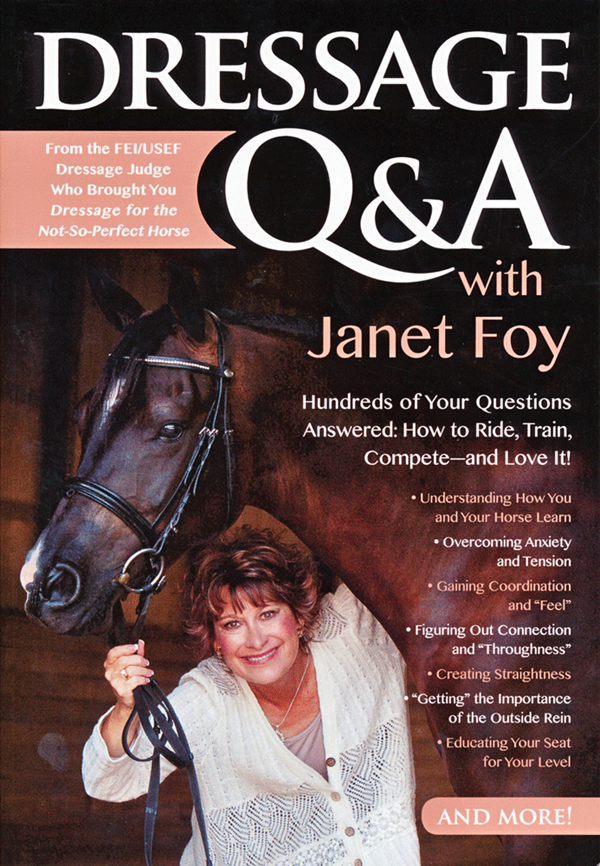
Maintaining the rhythm of the paces is the priority of dressage training. Anytime the training creates rhythm problems, the training is incorrect.
Vocabulary
Confusion is often generated by dressage tests, as the rider thinks the word “rhythm” covers only one thing, for example, when the horse is lame, there is no rhythm. Of course, this is not always the case, and to explain, I need to discuss some different words and their meanings.
In the United States, we have a very good judge-training program and were one of the first countries to put a priority on horse biomechanics. The vocabulary taught to American judges is very specific, and oftentimes, judges from other countries are not quite as clear with their words. For example, a foreign judge might just say in the comments, “Horse lost rhythm.” An American judge can use a variety of words instead, which mean very specific things. Here are some of them:
Tempo: This is the repetition of the rhythm—that is, faster or slower but still in the correct rhythm for the gait. So a judge might say about a trot: “Tempo varies.” This means the rider is allowing the horse to go faster, then slower: The rhythm is correct, but the speed is different.
Unlevel Strides: Here the horse has the correct rhythm, but one leg is taking a higher step. For example, in the medium trot, the front legs are not elevated to the same height. Or perhaps in passage, one hind leg is higher than the other. This term describes the legs when they are in the air.
Uneven Strides: Again, the rhythm is correct, but here there is one hind leg taking a shorter step than the other. This can occur at the walk, especially if there is tension in the horse’s back. It is also sometimes seen in the trot when there is a pattern of “long” then “short” with the hind legs.
Rhythm Problems: Sometimes a horse trips or the rider creates a temporary rein lameness (by restricting a horse with one rein) or perhaps the horse hits a deep spot at X. All of these things may cause a few steps of incorrect rhythm, but the problem is not consistent. It will be enough to lower your score, however, depending how pervasive it is throughout the test.
If the trot has 100 percent irregular rhythm, the judge will probably blow the whistle and eliminate you for lameness. Often a rider cannot feel lameness, and the judge, whose responsibility is to protect the horse, needs to make sure no more harm comes to him by letting the test continue.
Irregular: This comment is used mostly in trot, and if the judge sees it consistently in both directions, in all likelihood you will be eliminated. Judges use other terms that will not get you eliminated, such as uneven and unlevel. An irregular walk is not cause for elimination, but you will not receive a mark higher than a “4” when every step is lateral, which is the most usual problem with the walk. (A lateral walk means the horse’s legs on the same side are moving together. Pacing is another term often used for this.) Uneven steps at the walk can receive a slightly higher score but it’s usually below a “6.” Rhythm problems in the walk can lower the gait score in the Collective Marks.
Gait Score
The Gait Score in the Collective Marks is a reflection of the rhythm of all the gaits and paces shown and required in the test. This score is also influenced by the freedom and quality of the gaits. A horse with correct rhythm in all three gaits but with little freedom or elasticity will have a lower score than a horse with correct rhythm in all three gaits who also shows reach, freedom, expression and elasticity. Think of the “wow” factor when you see a horse who just takes your breath away. Correct training and correct muscling of the horse will improve his natural gaits: The trot improves the most, followed by the canter, but the walk you are pretty much stuck with.
Most judges will take the three gaits and average them for the final Gait Score. When the lengthenings, mediums and extensions show improved freedom, it gives the judge more information and thus an option to move the Gaits Score upward. However, lack of freedom in these movements is not a reason to move the score downward.
Dressage is all about “doing no harm” to the rhythm of the gaits. It is also about improving the quality and expression of the gaits. By following the Training Pyramid and correct dressage principles, you will keep on the right track.
Adapted from Dressage Q & A by Janet Foy. Available at www.EquineNetwork Store.com.
Rhythm is about the repetition of the footfalls for each gait. Without rhythm, we don’t have dressage in the classical sense or the competition sense.
This article originally appeared in the September 2015 issue of Practical Horseman.










